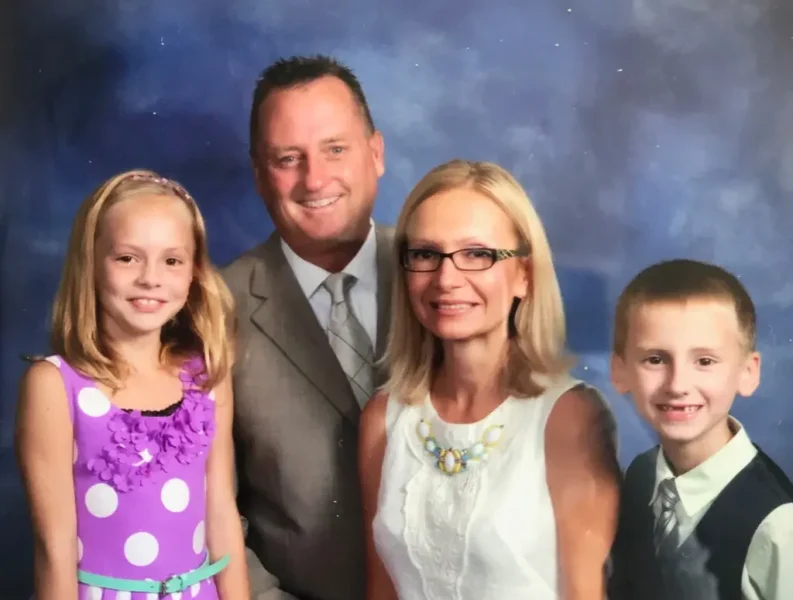Thrive
‘Take Care of Maya’ trial closes with more controversy

Attorneys for St. Petersburg’s Johns Hopkins All Children’s Hospital rested their case this week in a $220 million lawsuit chronicled in Netflix’s Take Care of Maya, but not before some last-minute controversy.
Gregory Anderson, lead counsel for the Kowalski family, told a Sarasota courtroom Friday, Oct. 27, that Maya’s complex regional pain syndrome (CRPS) worsened due to stress caused by the trial. He said the girl at the center of the lawsuit and documentary would miss the next several days.
“Maya has CRPS lesions reappearing,” Anderson said. “It’s not good.”
All Children’s attorneys returned to court Monday, Oct. 30, with social media images taken that weekend showing Maya attending her homecoming dance and Halloween events. “This is the life of Maya Kowalski today,” Ethan Shapiro told the judge.
“We did not aggravate a pre-existing condition. She’s at her prom, she’s out in heels … it’s in complete contradiction to her testimony.”
Jurors have heard nearly six weeks of testimony in a case that has garnered international headlines. All Children’s attorneys rested their case Nov. 1 after two weeks of presenting evidence and calling witnesses that refuted the prosecution’s claims.
Shapiro and Howard Hunter, lead counsel for the hospital, have long stated that they took the case to court due to the “chilling effect” it has on state and national mandatory reporting requirements. The trial also offered the chance to present a side of the story left out of the Netflix documentary.
Jurors will hear closing arguments next week, and Shapiro expressed confidence in the hospital’s case. “The evidence that we’ve been able to put on … has shown Maya came to us in a horrible condition on a number of dangerous and unnecessary drugs,” he said.
“We were able to successfully wean her off those drugs and get her to a place where she can be like you see her today – walking in and out of court, going to homecoming and living a normal teenage life.”
Maya was 10 and in a wheelchair when she was admitted to All Children’s Hospital in October 2016 with debilitating stomach pain. Her parents claimed she was suffering from severe CRPS symptoms.
Hospital attorneys allege Maya’s mother, Beata Kowalski, demanded she receive high doses of ketamine. Hunter said Maya’s primary care doctor gave her 12 times the “safe and effective” dose of the powerful dissociative anesthetic the day before her fateful trip to St. Petersburg.
Hunter said a malnourished Maya was also on 20 other medications at the time. All Children’s officials suspected child abuse and notified state authorities.
A judge ordered the hospital to shelter the girl. Beata hanged herself in the family’s Venice garage after 90 days without her daughter.
The Kowalskis claim the hospital falsely imprisoned, battered and misdiagnosed Maya. Hunter said local caregivers may have saved the girl’s life.
The defense’s case
Hunter noted that over 40 specialists from Lee to Hillsborough Counties believed there was a psychological component to Maya’s condition. Her father, Jack Kowalski, had those same suspicions.
All Children’s attorneys recently played a videotaped interview where Jack described researching Munchausen’s syndrome by proxy – a mental illness that causes caretakers to imagine or produce medical symptoms in someone else, typically their child, for attention and control.
“It was almost textbook of what we went through,” Jack said.

The Kowalski family, from left: Maya, Jack, Beata and Kyle, as seen in “Take Care of Maya.” Photo: Netflix.
The defense presented several emails Beata drafted to update a since-deleted public WordPress blog she wrote in Maya’s voice between November 2015 and June 2016, before her stay at All Children’s. “If I was a horse, I would be comatosed or dead already,” Beata wrote of the ketamine treatments.
She also admitted that the narcotic was causing cognitive impairment and memory loss. “I’ve been very forgetful from the ketamine … sometimes I can’t tell if it’s a.m. or p.m.,” Beata wrote in Maya’s voice. “Everything’s a blur.”
Pediatric nurse Kelly Thatcher testified that Beata offered Valium, a powerful sedative and antianxiety medication, to Maya as a reward during her time in the intensive care unit. “I stopped in my tracks and thought, ‘Did she just say that?'” Thatcher said.
“Like, Maya has laid here perfectly,” she recalled. “We never offer controlled substances to our patients for rewards.”
Thatcher also testified that Beata suggested placing Maya in hospice – a type of health care reserved for terminally ill patients. “I was very chilled when she said this because there was nothing … that made me think she was at risk of dying.”
Nurse practitioner Johanna Klink said Maya told her she was “tired of all these lies; my life is a lie.” Klink believed it was “a cry for help” and said the girl sounded “desperate.”
She asked Maya to elaborate and said the girl started to respond until Beata entered the room. Klink said the girl became withdrawn, and they never continued the conversation.
Anderson refuted the defense’s claims that Maya’s health drastically improved after her stay at the hospital. He said the girl “almost died after one relapse” that required a stay at Arnold Palmer’s Children’s Hospital in Orlando and a feeding tube to help mitigate weight loss.
“CRPS patients always have a little bit of pain,” Anderson said. “But it does come and go, and this is one of the elusive and frankly frustrating things about the disease.”
Attorneys expect to present closing arguments early next week.








Sarah White
November 15, 2023at10:17 am
I have had CRPS for 20+ years & am a disabled Veteran. Just because we have a pain condition does not mean that we are not entitled to try to make milestones & memories & pose (albeit briefly or long if we can manage) for photos to depict these milestones. Shame ON ANYBODY who judges another’s pain or tolerance. Maya was not required to be in court everyday & merely made her SENIOR IN HIGH SCHOOL MILESTONES for moments to make her boyfriend & family happy. She had to do this WITHOUT BEATA. No shopping with her mom or moments with her. I’ve lived 20+ years with the same hideous judgement I’ve read in these comments & online. I managed to take my kids on vacation last year although I spent time resting a lot. I dare someone to look at a photo of me & judge my level of pain. May any of you never have to live with CRPS or another chronic pain condition so that you may truly never understand & as the Bible says “Forgive them Lord for they do not know”. ~ Walk a mile in another’s moccasins before you so thoughtlessly cast judgement of their life!
CONGRATULATIONS MAYA KOWALSKI & Family on your win! The Jury saw through the harm & lies that JHACH initiated & continued since 2016. We all saw their lies!! 🧡 CRPS WARRIORS 🧡
rpsabq
November 9, 2023at2:20 am
Maya’s lawyers LIED in court about her being sick. With that, I believe she faked the whole thing.
MJ Brewer
November 6, 2023at2:23 pm
As a writer, my ability to decipher hidden meanings in text is a process I commit to on a daily basis. Lawyers are also practiced in the world of language and how it may be deciphered–manipulating the meaning to sway juries is their job. Many phrases, such as “Hunter noted that over 40 specialists from Lee to Hillsborough Counties believed there was a psychological component to Maya’s condition,” seem to imply that Maya’s illness is psychosomatic. It’s important to recognize that when people experience pain, they are acutely aware of it. This awareness can lead to a constant preoccupation with their discomfort. In cases where pain is severe, it can lead to a detachment from one’s physical body.
In the realm of science, it’s well understood that the brain, heart, and nervous system are intricately interconnected. They do not operate independently but rather influence each other.
Another statement that appears to be taken out of context is the comment made by the prosecuting attorney, Ethan Shapiro, who said, “This is the life of Maya Kowalski today.” It’s crucial to consider that the photograph in question does not depict her current state but rather a moment from a few weeks ago. Many individuals experience health fluctuations that can be significantly affected by factors like weather or menstrual cycles. One week, they may be debilitated, and the next, they could engage in physically demanding activities.
This is a high-stakes legal case, and no amount of compensation can ever replace Maya’s mother. It’s evident that without her mother’s tragic passing, Maya would be in a difficult situation. The seven-year Statute of Limitations is now in play, and it appears that Shapiro and his associates have deliberately delayed proceedings, a tactic often used by defendants, in the hope of encountering legal obstacles. This procrastination is the reason they’ve waited until now and are grasping for any possible argument.
If the opposing party prevails in this lawsuit, some may argue that it is indicative of a changing landscape in the United States, and it could be seen as a departure from the principles that have historically defined the nation.
Kathrine K.
November 6, 2023at1:44 pm
I hope every party gets what they deserve in this case. So upsetting and sick. Healthcare workers are supposed to advocate for their patients. Clearly these people have no right to practice in their profession. My condolences to the family…
Kathy
November 6, 2023at10:05 am
I would do anything to keep my child from severe pain. This is about doctors from different hospitals disagreeing. It is the parents right to decide what hospital there child should be in or transfer to. To have a child in pain and keep them in pain when they do not have the right. Awful.
Micaela Wallace
November 6, 2023at12:06 am
I’m 75 years old and I have had RSD or CRPS since 1987. My life has been a nightmare since then. I was confined to a wheelchair for 5&1/2 years. I hope that the jury will find in Maya’s favor . If I knew how to get ahold of her attorney I would have done it. There’s so much I could tell them about this dreadful disease. My heart goes out to the family and I pray that they will win their case.
Sharon R
November 5, 2023at3:49 pm
What a one sided article. COME ON MAN ! Just like Sally Smith who went in front of the judge giving only information that would give the judge the idea that CRPS wasn’t a diagnosis that lead to Maya being removed in the first place. And her hopeless mother who only saw suicide as a way to get Maya out of JHCH, who was withholding Maya from her most important support system.
I suffer from CRPS, Dr Hanna has been one of my treating specialists. Ketamine is the only thing that gave me pain relief and return of functioning. I am not alone, people all over the world travel to see Dr Hanna and follow his Ketamine protocol. Stress is a major factor in managing CRPS. Even if a person does engage in a event, it doesn’t mean they don’t have intense pain. Don’t you think the hospital took enough away from Maya (and her family)? So what if she went to an event that is normal and memorable for young people her age? I’m sure Maya would have much preferred to have her mother around to share in her homecoming preparation. SJCH took that and every event that a young child, woman would want to have their mother involved in, away, when they accused Maya’s mother of abuse, when she was just very knowledgeable in what Condition her child had and what worked to manage her daughter’s pain. The hospital told the judge that Maya had Munchausen Proxy all the while billing for CRPS. Too many people at that hospital are uneducated, on power trips and refuse to listen to Maya’s treating specialist that had decades of experience in successfully treating CRPS.
Johnny Gavin
November 5, 2023at9:45 am
I don’t know how people don’t see, Beata didn’t kill herself, the husband injected her with ketamine so she’d be comatose and hung her.. for the abuse she was doing to his daughter. He knew she was going too kill that little girl.. if that hospital didn’t shelter her Maya would be dead either alone or with Beata and Beata would’ve blamed the hospital and the judge..
You supposedly care so much about your child but yu abandon her?? And off yourself??
All this is just damaging that beautiful girls head more and more.. it’s 😔 sad.
Wish Maya the beat, and stay healthy and move on from this as fast as possible.
Crps doesn’t change that she’s beautiful..
Lindsay
November 4, 2023at11:45 pm
This article leaves out so much information for summing up what the family went through I couldnt finish reading. Explain why Beata hung herself.
Austin Richards
November 4, 2023at2:33 pm
$220 million isn’t even close to being enough to punish the evil that was carried out against this family. The judge that took Maya away from her mother should be disbarred and I hope every other family who suffered at the hands of this hospital come forward and get what they deserve as well.